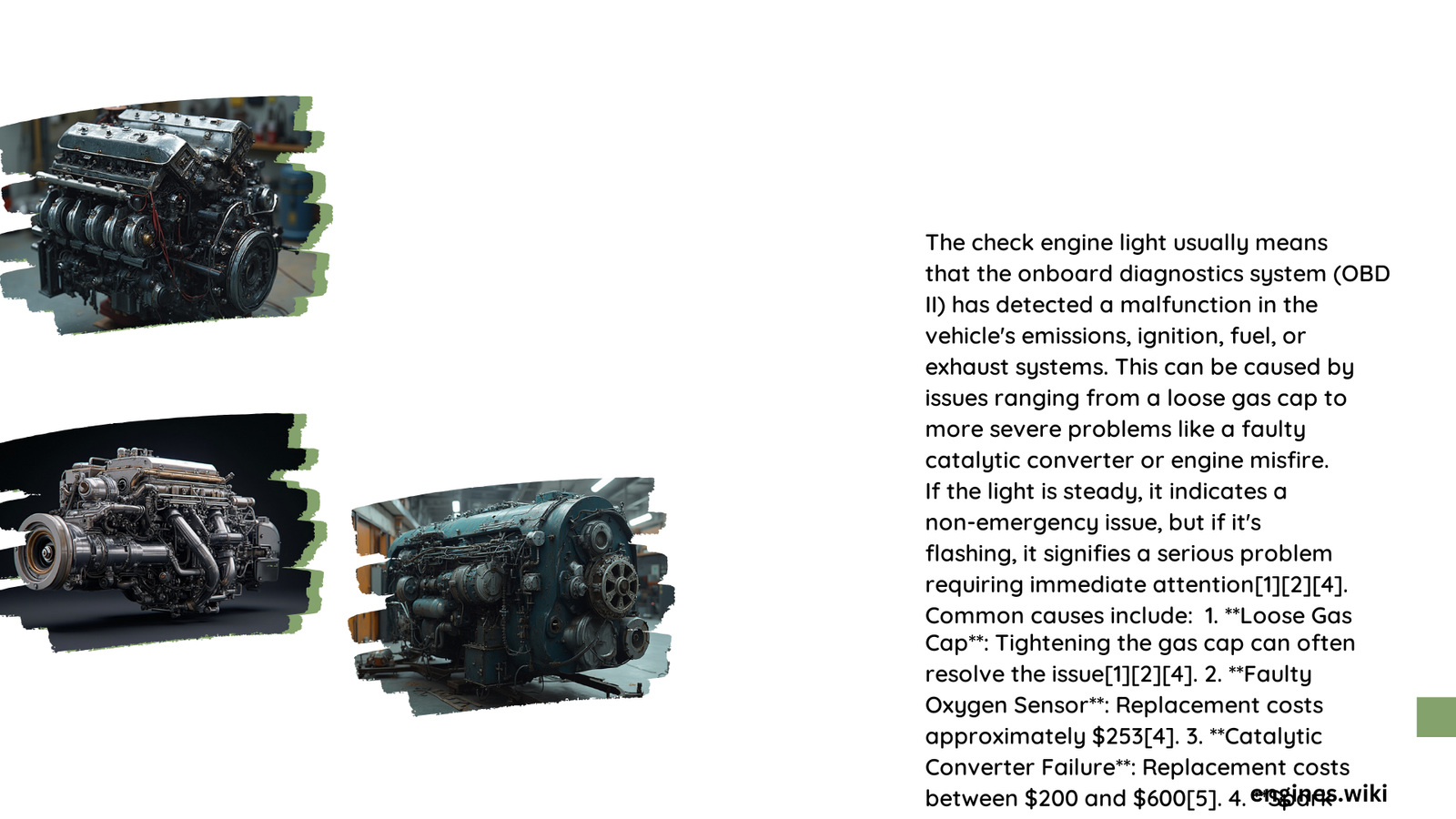Check Engine Light Usually Means: A Comprehensive Vehicle Diagnostic Overview
When your vehicle’s check engine light illuminates, it signals a potential issue within your car’s complex engine or emissions system. This warning can range from minor problems like a loose gas cap to more serious mechanical failures that require immediate attention. Understanding these signals can help you prevent costly repairs and maintain your vehicle’s optimal performance.
What Triggers the Check Engine Light?
The check engine light is your vehicle’s way of communicating potential problems through standardized diagnostic trouble codes (DTCs). These codes provide mechanics and car owners with specific insights into what might be malfunctioning.
Top Reasons for Check Engine Light Activation
| Issue | Potential Diagnostic Code | Estimated Repair Cost |
|---|---|---|
| Loose Gas Cap | P0440, P0442 | $0 – $20 |
| Oxygen Sensor Failure | P0130 – P0167 | $200 – $500 |
| Catalytic Converter Problem | P0420, P0430 | $500 – $2,000 |
| Engine Misfire | P0300 – P0312 | $100 – $1,000 |
What Are the Most Common Check Engine Light Signals?
Is a Loose Gas Cap a Serious Problem?
Surprisingly, a loose or faulty gas cap is one of the most frequent triggers for the check engine light. This minor issue can cause:
- Fuel system pressure loss
- Potential evaporative emissions system leaks
- Decreased fuel efficiency
Quick Fix:
1. Tighten the gas cap
2. If problem persists, replace the gas cap
3. Reset the check engine light using an OBD2 scanner
How Do Oxygen Sensors Impact Engine Performance?
Oxygen sensors monitor the air-fuel mixture in your engine. When they malfunction, you might experience:
- Reduced fuel economy
- Rough engine idling
- Decreased overall performance
Diagnostic Steps:
– Use an OBD2 scanner to identify specific sensor issues
– Check sensor wiring and connections
– Replace faulty sensors
When Should You Worry About the Check Engine Light?
Are Some Check Engine Light Warnings More Critical?
While not all check engine light signals indicate immediate danger, some require prompt attention:
- Flashing Check Engine Light:
- Indicates severe engine misfire
- Potential catalytic converter damage
-
Immediate professional inspection recommended
-
Steady Check Engine Light:
- Suggests a minor issue
- Can be diagnosed and potentially fixed without urgent intervention
How to Diagnose Check Engine Light Issues?
What Tools Do You Need?
- OBD2 diagnostic scanner
- Multimeter
- Basic hand tools
- Vehicle’s repair manual
Diagnostic Process:
- Connect OBD2 scanner
- Read and record diagnostic trouble codes
- Research specific codes
- Perform recommended tests
- Repair or replace components as needed
Pro Tips for Check Engine Light Management
- Don’t ignore persistent warning lights
- Regular vehicle maintenance prevents many issues
- Keep a record of diagnostic codes
- Consider professional diagnosis for complex problems
When to Seek Professional Help?
- Multiple diagnostic codes
- Lack of technical expertise
- Complex engine systems
- Potential safety-related issues
Conclusion
Understanding what your check engine light usually means empowers you to make informed decisions about your vehicle’s health. While some issues are minor, others can lead to significant damage if ignored.

